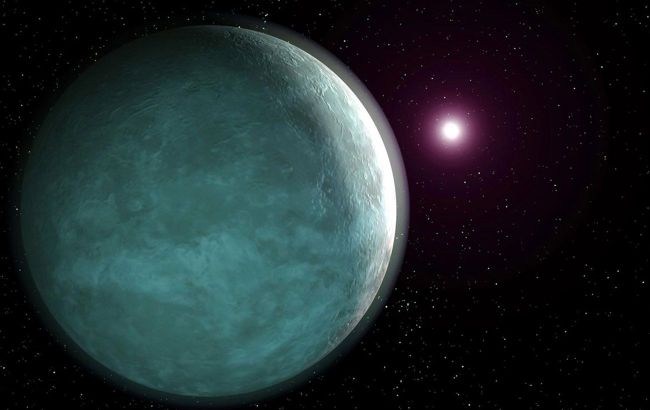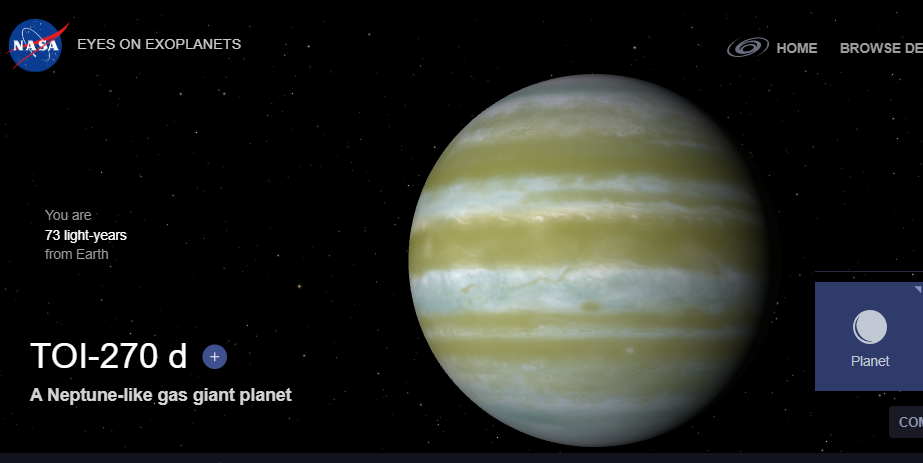Scientists discover planet with boiling ocean: Potential for life
 The exoplanet TOI-270 d has an interesting atmosphere (Photo: exoplanets.nasa.gov)
The exoplanet TOI-270 d has an interesting atmosphere (Photo: exoplanets.nasa.gov)
Observations of one of the exoplanets, which is twice the size of Earth, have allowed scientists to suggest the presence of a deep-water and very hot ocean on its surface.
RBC-Ukraine tells about what is known about this planet and whether life is possible on it.
The following sources were used in preparing the material: The Guardian, NASA.
About the planet
An exoplanet, resembling Neptune, named TOI-270 d, was discovered by scientists in 2019.
It is located at a distance of about 73 light-years from Earth, and its mass is 4.78 times that of Earth.
In the search for life-sustaining conditions beyond Earth, astronomers continued to observe TOI-270 d.
Their results suggest that the planet's surface may be entirely covered by an ocean.
 This is what the planet might look like (screenshot: exoplanets.nasa.gov)
This is what the planet might look like (screenshot: exoplanets.nasa.gov)
What scientists have learned
Observations conducted using NASA's James Webb Space Telescope (JWST) detected in the exoplanet's atmosphere:
- water vapor
- chemical signs of methane and carbon dioxide
According to researchers from the University of Cambridge, this chemical mixture corresponds to:
- a watery world where the ocean covers the entire surface
- an atmosphere rich in hydrogen
At the same time, they did not observe a calm, pleasant marine landscape.
 JWST before launching into space (photo: webb.nasa.gov)
JWST before launching into space (photo: webb.nasa.gov)
Is life possible on this planet
Professor Nikku Madhusudhan, who led the study, explained that the ocean temperature on this planet "could be upwards of 100 degrees [Celsius] or more."
He also suggested that due to high atmospheric pressure, the hot ocean may be rare. However, whether it is suitable for life is currently unknown.
Meanwhile, a team of scientists from Canada, conducting additional research on TOI-270 d, disputes such an interpretation.
They found similar atmospheric chemical compounds but noted that this planet may be too hot for liquid water. Instead, it would have a rocky surface with a dense atmosphere of hydrogen and water vapor.
"Whichever view wins out, these latest observations showcase the stunning insights James Webb is giving into the nature of planets beyond our solar system," the scientists emphasized.
According to them, "the telescope captures the starlight that has been filtered through the atmospheres of orbiting planets to give detailed breakdowns of the chemical elements present."
"From this, astronomers can build up a picture of conditions at a planet’s surface – and the likelihood of life being able to survive there," the researchers concluded.
Recall that earlier we discussed why and how Starlink satellites threaten Earth.

